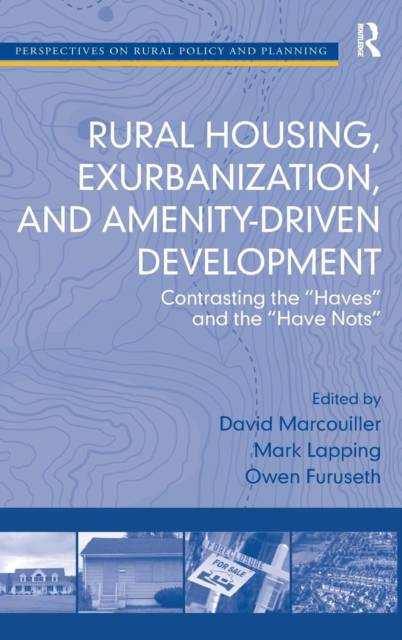
- Afhalen na 1 uur in een winkel met voorraad
- Gratis thuislevering in België vanaf € 30
- Ruim aanbod met 7 miljoen producten
- Afhalen na 1 uur in een winkel met voorraad
- Gratis thuislevering in België vanaf € 30
- Ruim aanbod met 7 miljoen producten
Zoeken
Rural Housing, Exurbanization, and Amenity-Driven Development
Contrasting the 'Haves' and the 'Have Nots'
Mark Lapping
€ 305,45
+ 610 punten
Uitvoering
Omschrijving
Rural America is progressing through a dramatic and sustained post-industrial economic transition. For many, traditional means of household sustenance gained through agriculture, mining and rustic tourism are giving way to large scale corporate agriculture, footloose and globally competitive manufacturing firms, and mass tourism on an unprecedented scale. These changes have brought about an increased presence of affluent amenity migrants and returnees, as well as growing reliance on low-wage, seasonal jobs to sustain rural household incomes. This book argues that the character of rural housing reflects this transition and examines this using contemporary concepts of exurbanization, rural amenity-based development, and comparative distributional descriptions of the "haves" and the "have nots". Despite rapid in-migration and dramatic changes in land use, there remains a strong tendency for communities in rural America to maintain the idyllic small-town myth of large-lot, single-family home-ownership. This neglects to take into account the growing need for affordable housing (both owner-occupied and rental properties) for local residents and seasonal workers. This book suggests that greater emphasis be placed in rural housing policies that account for this rapid social and economic change and the need for affordable rural housing alternatives.
Specificaties
Betrokkenen
- Auteur(s):
- Uitgeverij:
Inhoud
- Aantal bladzijden:
- 300
- Taal:
- Engels
- Reeks:
Eigenschappen
- Productcode (EAN):
- 9780754670506
- Verschijningsdatum:
- 28/12/2010
- Uitvoering:
- Hardcover
- Formaat:
- Genaaid
- Afmetingen:
- 156 mm x 234 mm
- Gewicht:
- 598 g

Alleen bij Standaard Boekhandel
+ 610 punten op je klantenkaart van Standaard Boekhandel
Beoordelingen
We publiceren alleen reviews die voldoen aan de voorwaarden voor reviews. Bekijk onze voorwaarden voor reviews.











